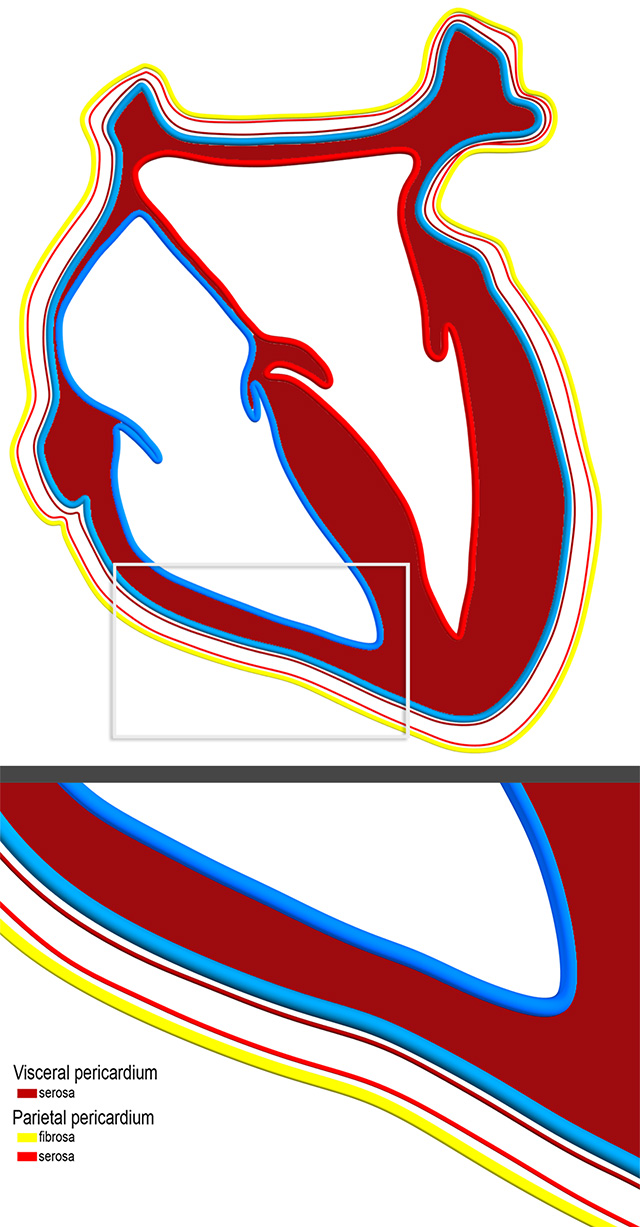Normal Pericardial Anatomy - III
 This diagram shows the parietal vs. visceral pericardium. The pericardium has, as many other serosal surfaces, a parietal and a visceral component. The parietal pericardium is composed of two layers: a serosal lining (thin red line) and a fibrous sac (thicker yellow line). The visceral pericardium or epicardium is composed of a single layer of serosal investment covering the entire heart (thin red line overlying the myocardium in blue). Note that the serosal lining of the parietal and visceral pericardium is a continuous layer of mesothelial cells. The serosal layer of the parietal and visceral pericardium face each other. The potential space lined by the serosal layers is the pericardial cavity.
This diagram shows the parietal vs. visceral pericardium. The pericardium has, as many other serosal surfaces, a parietal and a visceral component. The parietal pericardium is composed of two layers: a serosal lining (thin red line) and a fibrous sac (thicker yellow line). The visceral pericardium or epicardium is composed of a single layer of serosal investment covering the entire heart (thin red line overlying the myocardium in blue). Note that the serosal lining of the parietal and visceral pericardium is a continuous layer of mesothelial cells. The serosal layer of the parietal and visceral pericardium face each other. The potential space lined by the serosal layers is the pericardial cavity.
The specimen below illustrates these layers.

A. Coronal section of the heart showing that the epicardial fat is abundant in the right atrioventricular sulcus where a cross section of the right coronary artery is seen (arrow). The right ventricular free wall also contains a variable amount of epicardial fat that helps outline the pericardium. Note the abundance of epipericardial fat at the angle between the pericardium and diaphragm anteriorly. A and B. Right lateral view of the pericardium shows the right phrenic nerve (arrows). It courses parallel and lateral to the superior vena cava and continues downward, anterior to the right pulmonary hilum, towards the diaphragm.
PA = Pulmonary artery. Ao = Aorta. LAA = Left atrial appendage. RAA = Right atrial appendage. RV = Right ventricle. LV = Left ventricle.
A close up of the parietal (fibrous) pericardium and visceral pericardium (epicardium) of the right and left ventricles (white boxes) is shown here.
Back to Pericardial disease
Back to Home Page
Back to Home Page

